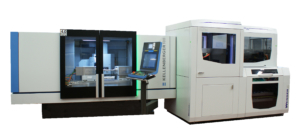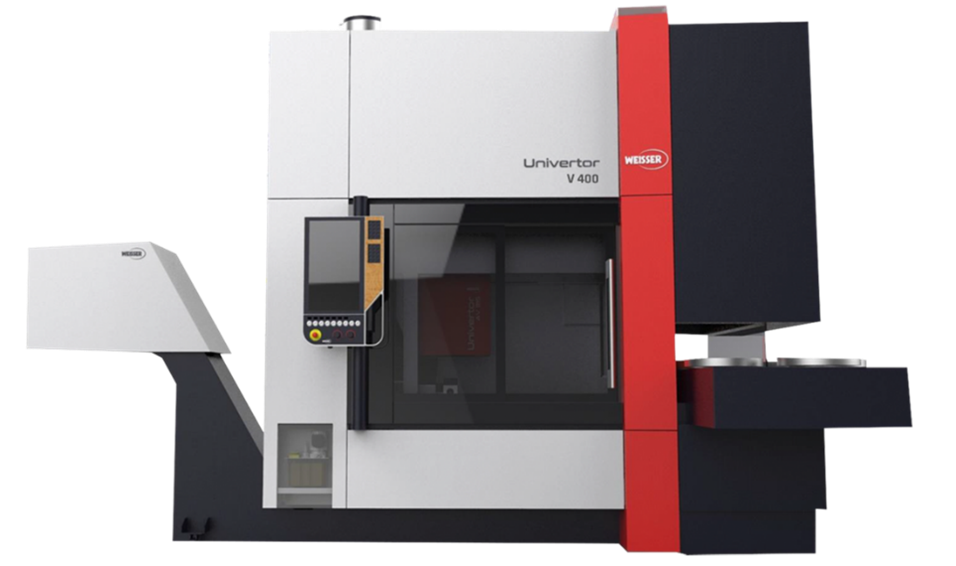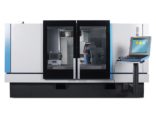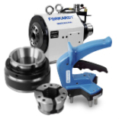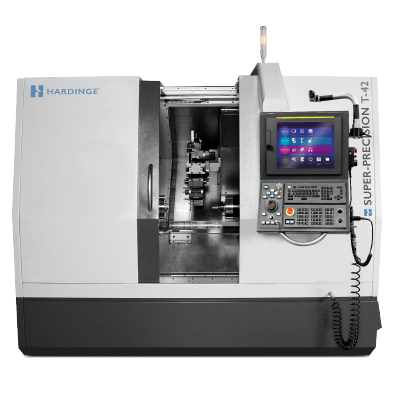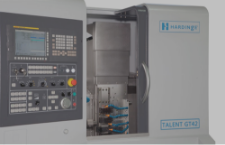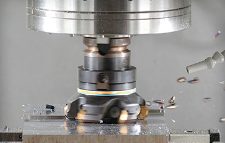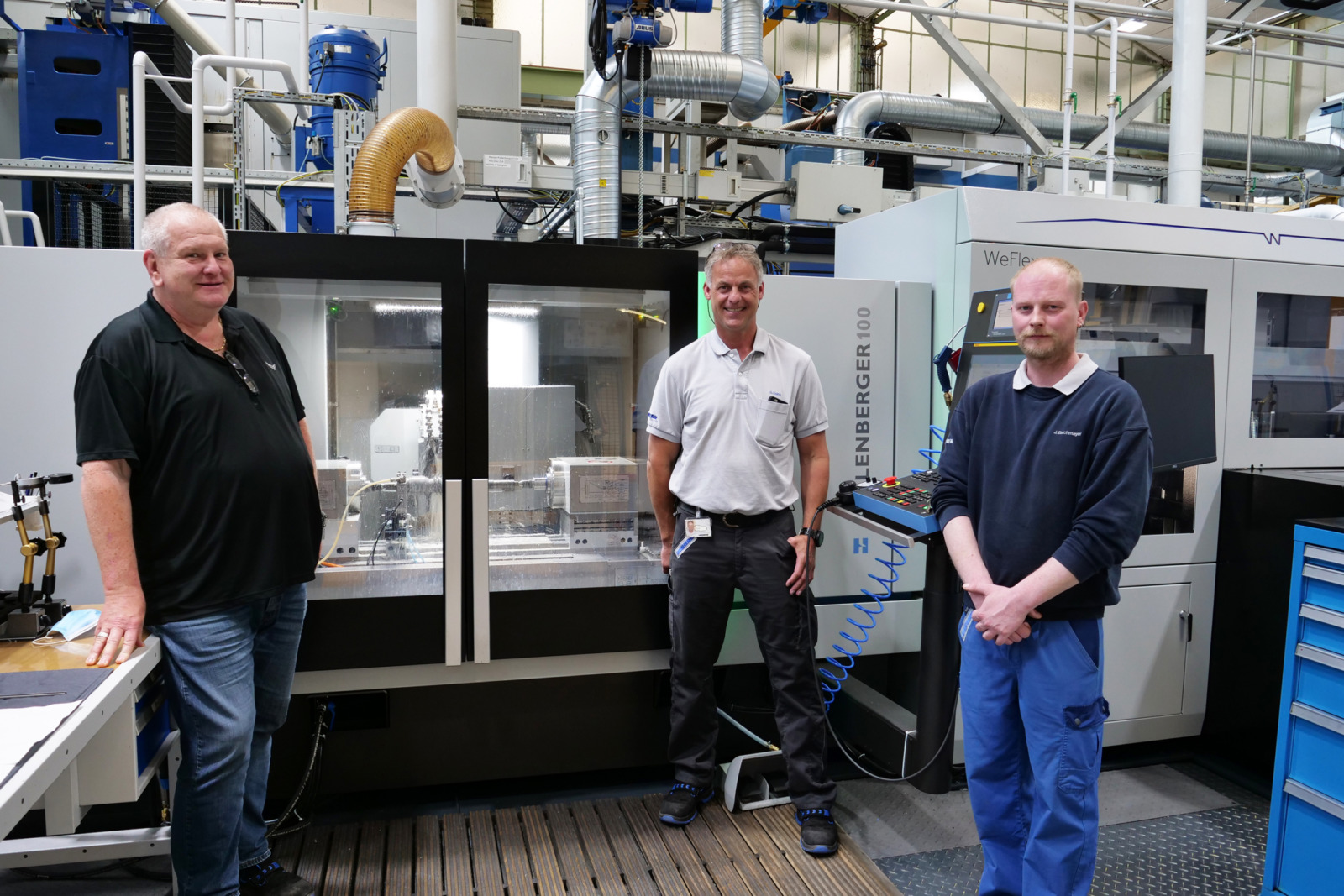Esigenze di qualità soddisfatte al meglio
Author: Andrea Jäger (text and photos)
The product portfolio of Liebherr-Verzahntechnik GmbH, based in Kempten, Germany, is impressively diverse. It covers gear cutting technologies such as gear shaping, gear hobbing, gear peeling, gear and profile grinding, chamfering and deburring for the production of any type of gear. The high-precision machines are used in sectors such as aerospace, the automotive industry and its suppliers, the wind power and mining industries, as well as robotics and medical technology. Applicable to all sectors: the customers have enormously high requirements regarding quality. Circular grinding operations on machine parts are consequently carried out on universal grinding machines from Swiss manufacturer Kellenberger.
The Liebherr modular system contains thousands of different parts. Each basic machine series can be equipped with components for customer-specific machining, thus turning each machine into a special purpose machine. Liebherr engineers often develop solutions for customers’ machining tasks that are not available on the market.
Grinding is the supreme discipline of machining, making the Liebherr grinding shop something like the nucleus of maximum precision for core components. Since 2013, this production department has been housed in a new air-conditioned hall – a decisive factor for high precision in machining. As in all areas of production at Liebherr, only specialized experts work at the machines in the grinding shop. Grinding shop supervisor Gerd Eising, his colleague and deputy Jürgen Rimac, and the ten employees work in two shifts to ensure that the high demands of quality control are met. “Accuracy dominates everything at Liebherr quite decisively.” Gerd Eising confirms. “At 3 micrometers, quality control gets nervous; form errors and dimensional deviations above 3 µm are practically rejects.” The purchase of a new machine is therefore planned thoroughly. For the machining of round parts, the decision was made years ago in favor of universal grinding machines from Kellenberger.
In 1995, the first Kellenberger cylindrical grinding machine KEL-Varia went into operation at Liebherr. A second machine with a Kelco 120 control was procured in 2010 and used specifically for non-circular grinding. Two additional KEL-Varia machines followed in 2014, one of them as a replacement for the first KEL-Varia. The parts that are ground on the machines measure from 5 to 1,500 mm.
The universal cylindrical grinding machine KEL-Varia is the predecessor model to the current premium Kellenberger 1000 series and, like the latter, stands for the highest machining and surface quality. Over 1,500 machines of this series are in operation worldwide. The machine owes its success to its high static and dynamic rigidity and stability, both decisive factors for high precision and productivity. The performance spectrum of the Varia meets with the quality requirements of precision production of prototypes as well as small and medium-sized series.
The KEL-Varia machines are designed with center widths 1000/600 mm and center height 200 mm and for workpiece weights up to 150 kg. The machines are equipped with hydrostatic guides in all main axes for highest form accuracies when performing grinding work with interpolating axes. The B axis has a direct drive. The turret grinding head thus swivels about three times faster and positions with an accuracy of less than one angular second. Particularly when machining requires the swiveling in of different grinding wheels, this reduces non-productive times and increases productivity.
Jürgen Rimac, a trained application grinder and programmer, can precisely name the reasons for choosing Kellenberger: “Of course, the competitors also had good machines. But with Kellenberger, it wasn’t just the machining quality that convinced us, but also the accessibility to the well-structured, tidy workspace and, above all, the easy programming, which is normally done directly on the machine by the grinders.”

For Jürgen Rimac, Gerd Eising and Jörg Bachmeyer (from left) the Kellenberger 100 scores points thanks to automation with pallet loader
For Jörg Bachmeyer, a trained grinder, the simple programming of the Kellenberger machines also has clear advantages: “In terms of tolerances, things never get boring here in the grinding shop. Good programs make the work immensely easier.” The newer KEL-Varia machines include the programming features KEL-Soft and KEL-Assist, useful for the adaption of existing programs to changing machining requirements. Various ready-made software packages are included as standard or can be added as an option. They cover simple workpieces, complex workpieces in the shortest machining time, and complex contours and profiles.
Automated Kellenberger 100 for smaller parts
The most recent addition to the grinding shop, the Kellenberger 100 universal cylindrical grinding machine, uses intuitive operator guidance. The machines are equipped with the latest Fanuc 31i CNC control with 19″ touch screen with a choice of newly designed cycle programming or workpiece-based graphic programming. Kellenberger has been a part of Hardinge Inc. for more than two decades. The platform concept of the Kellenberger 100 is a new modular system which also incorporates other proven Hardinge machine concepts. A wide variety of configurations are possible for a wide range of grinding operations. To keep non-productive times low, most of the programming of the Kellenberger 100 is done externally. Jürgen Rimac also programs non-circular contours and all contours that have to be dressed in grinding wheels at an external workstation.
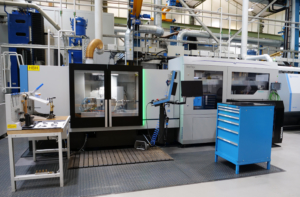
The Kellenberger 100 is available in center widths 1000/600 mm and center height 200 mm and is designed for workpiece weights up to 150 kg. The high drive power of the grinding wheel provides for increased productivity, while the newly developed Z-guide ensures great profile accuracy. The C-axis with direct drive brings higher accuracy for non-circular grinding.
Technical highlights of the Kellenberger 100
The technical highlights of the Kellenberger 100 include an innovative compact grinding head (10 grinding head variants, 11.5 kW drive power, 500 mm wheel, up to 63 m/s, HF spindles for internal grinding incl. diagonal and tandem arrangement), a collision-free universal head with three tool positions and one measuring position, and a new measuring probe arrangement without swivel mechanism for increased measuring accuracy. A synchronous tailstock allows complete machining of shafts without a driver, so the workpiece can be completely machined over its entire length.
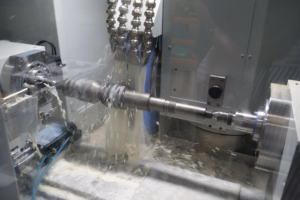
Grinding between centers of a table section screw for a Liebherr BK2 machine

Customized pallet automation
Automation is a major topic in the grinding shop, as at least half of the two shifts are operated unmanned. The Kellenberger 100 meets this requirement thanks to the WeFlex automation solution, which Swiss automation specialist Wenger has specially adapted to this machine. The resulting flexibility played a decisive role in the purchase decision. The loader for chuck and shaft parts holds 40 to several hundred parts and is controlled separately. In the grinding shop, batch sizes range from 1 to 100 pieces, in rare cases up to 200 pieces. “From more than five pieces, it is worth using the loader,” says Jörg Bachmeyer. “We also load eccentric bolts via the loader.”

A gripper picks up the finished workpiece from the machine room (picture above), transports it back to the loader and deposits it in the pallet (picture below).

The WeFlex loader enables automated processing of shaft parts Ø 6 – 100 mm, L = 20-600 mm, max. gripper diameter = 80 mm and chuck parts Ø 4-100 mm, L = 15-100 mm, max. gripper diameter = 80 mm with workpiece weights of max. 5 kg in alternating mode, max. 15 kg in single part mode. Interchangeable gripper heads facilitate quick changeover between shaft and chuck parts.
In the stacking module, 8 pallet spaces of size 400 x 600 mm are available. Inserts for shaft or chuck parts can be inserted in the pallet frames. The machine is loaded via a telescopic line gantry. An automatic hatch closes off the machine room during machining to ensure the thermal stability of the machine. Directly at the infeed, electricity and compressed air are recorded, which allows the energy consumption of the WeFlex to be recorded and visualized. To reduce energy consumption, the speed of the WeFlex is automatically adjusted to the cycle time of the processing machine. An image-guided setup wizard assists the operator when changing over to a new workpiece.
In response to the question why Kellenberger is awarded the contract again and again, Gerd Eising says, “It’s not an automatic process. When a machine is to be procured, all eligible machine manufacturers are considered. The machine with the most suitable technology and the best price performance ratio is awarded the contract. In Kellenberger, we have a competent contact for all technical and service issues. The after-sales service for Kellenberger grinding machines comes from Switzerland and the production site is practically around the corner.” So it’s quite likely that the next grinding machine will also be a Kellenberger.
